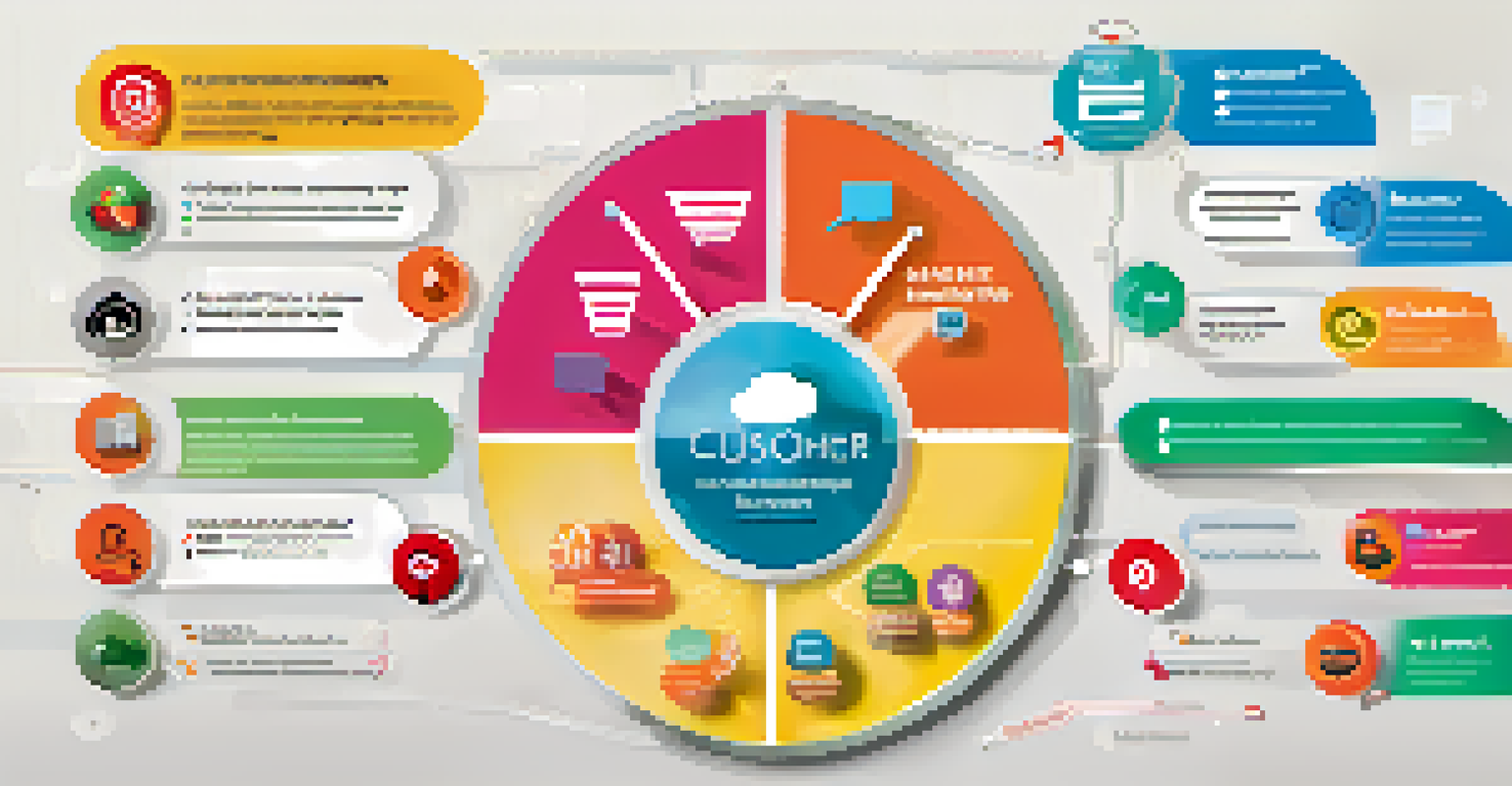Understanding Customer Experience Management: A Comprehensive Guide

What is Customer Experience Management (CEM)?
Customer Experience Management, often abbreviated as CEM, refers to the strategies and processes that a company uses to manage interactions with its customers. It's all about understanding customer needs and expectations at every stage of their journey. By focusing on these interactions, businesses can create positive experiences that foster loyalty and satisfaction.
Customer experience is the next competitive battleground.
CEM encompasses various touchpoints, from initial contact to post-purchase follow-ups. Think of it like a journey where each step can either enhance or hinder the overall experience. When companies invest in CEM, they’re not just looking to solve problems—they're aiming to delight customers at every turn.
Ultimately, effective CEM helps businesses build stronger relationships with their customers. This leads to repeat business and positive word-of-mouth, which are crucial in today’s competitive landscape.
The Importance of Customer Experience Management
Why should businesses prioritize Customer Experience Management? The answer lies in the growing expectations of consumers. In an age where choices are abundant, customers are more inclined to stick with brands that provide exceptional experiences. A positive customer experience can set a brand apart from its competitors.

Moreover, CEM can significantly impact a company's bottom line. Research shows that companies with strong customer experience strategies outperform their competitors in terms of revenue growth and profitability. This means investing in CEM is not just a nice-to-have; it's a smart business strategy.
CEM Enhances Customer Loyalty
Customer Experience Management focuses on optimizing interactions to foster loyalty and satisfaction, ultimately leading to repeat business.
Additionally, enhancing customer experience can lead to increased customer retention. When customers feel valued and understood, they are more likely to return, which reduces the costs associated with acquiring new customers.
Key Elements of Effective Customer Experience Management
Effective CEM hinges on several key elements, starting with understanding the customer journey. Mapping out this journey helps businesses identify critical touchpoints where they can positively influence customer perceptions. This involves looking at every interaction, from marketing to customer service.
It’s not the tools you use, but how you use them that makes the difference in customer experience.
Another essential element is gathering and analyzing customer feedback. Regularly soliciting feedback through surveys or direct communication can provide insights into what customers value. This data is invaluable for refining processes and improving overall experience.
Finally, employees play a crucial role in CEM. Training staff to understand and prioritize customer needs ensures that every team member contributes to a positive experience. When employees are engaged and equipped to serve customers well, the benefits reflect in customer satisfaction.
Tools and Technologies in Customer Experience Management
In today’s digital age, leveraging technology is vital for effective CEM. There are various tools available that help businesses track and analyze customer interactions. Customer Relationship Management (CRM) systems, for example, can centralize customer data and interactions, making it easier to personalize experiences.
Moreover, analytics tools can provide insights into customer behavior and preferences, helping businesses make informed decisions. By understanding trends and patterns, companies can tailor their offerings to better meet customer needs.
Tech Tools Boost CEM Efficiency
Utilizing technology, such as CRM systems and analytics tools, helps businesses track customer interactions and tailor experiences effectively.
Lastly, social media platforms have become essential for real-time feedback and engagement. Monitoring social channels allows businesses to respond promptly to customer inquiries and issues, further enhancing the customer experience.
Measuring Customer Experience Effectively
Measuring customer experience is crucial for understanding its impact on your business. Key performance indicators (KPIs) such as Net Promoter Score (NPS) and Customer Satisfaction Score (CSAT) can provide valuable insights into how customers perceive your brand. These metrics help identify areas for improvement.
Additionally, qualitative feedback from customers can complement these metrics. Conducting interviews or focus groups can yield deeper insights into customer sentiments and expectations. This combination of quantitative and qualitative data ensures a well-rounded view of the customer experience.
Regularly analyzing these metrics allows businesses to track progress over time. By continuously refining strategies based on customer feedback and performance data, companies can enhance their CEM efforts and ultimately drive success.
Challenges in Customer Experience Management
While CEM offers numerous benefits, it also comes with its challenges. One major hurdle is ensuring a consistent experience across all channels. Customers expect a seamless journey whether they interact with a brand online or in-store, and discrepancies can lead to frustration.
Another challenge is managing customer expectations. In an era of instant gratification, customers have heightened expectations for service and responsiveness. Meeting these demands can be tough, especially for businesses with limited resources.
Measuring CEM is Essential
Key performance indicators and qualitative feedback are crucial for understanding customer perceptions and improving the overall experience.
Lastly, integrating customer feedback into existing processes can be daunting. Companies often struggle to act on insights gathered from customer interactions. However, overcoming this challenge is essential for driving continuous improvement and enhancing customer satisfaction.
Future Trends in Customer Experience Management
As technology evolves, so too does the landscape of Customer Experience Management. One significant trend is the increasing use of artificial intelligence (AI) to personalize customer interactions. AI can analyze vast amounts of data to predict customer preferences and tailor experiences accordingly.
Additionally, omnichannel experiences are becoming more critical. Customers want the flexibility to interact with brands through various channels, and businesses must adapt to this demand. This involves integrating online and offline experiences to create a cohesive journey.

Lastly, there’s a growing emphasis on emotional intelligence in customer interactions. Understanding and responding to customer emotions can significantly enhance their experience. Companies that prioritize empathy and connection in their CEM strategies will likely lead the way in the future.